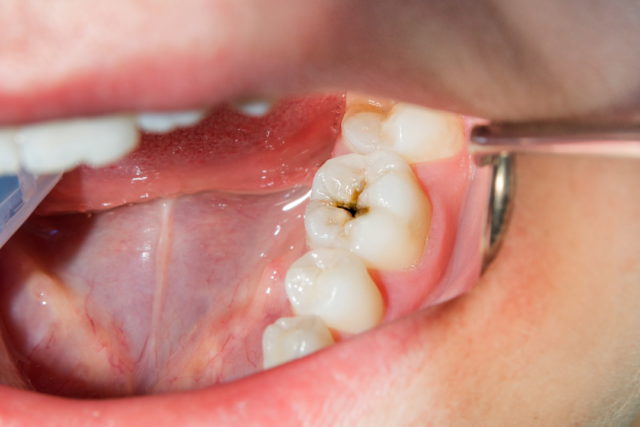What Does a Cavity Look Like? Identifying and Preventing Cavities
Cavities, also known as dental caries or tooth decay, are one of the most common dental issues faced by people of all ages. Understanding what a cavity looks like and recognising the early signs can help you seek timely treatment and prevent further damage.
In this blog, we will explore the appearance of cavities, how to spot them, and provide tips on prevention and treatment. Our aim is to give you clear and friendly information to maintain your oral health.

What is a Cavity?
A cavity is a damaged area on the surface of a tooth that develops into tiny holes or openings. It is caused by the combination of bacteria, frequent snacking, sugary drinks, and inadequate cleaning of teeth. If left untreated, cavities can grow larger and affect deeper layers of your teeth, leading to severe toothache, infection, and even tooth loss.
What Does a Cavity Look Like?
Cavities can appear in various stages, and their appearance can vary depending on the severity and location. Here are the typical signs to look out for:
- Early Signs of a Cavity
- White Spots: The first visible sign of a cavity is often a white spot on the tooth. This indicates demineralisation, where minerals are being leached from the enamel.
- Sensitivity: You may notice increased sensitivity to sweet, hot, or cold foods and drinks.
- Progressing Cavities
- Brown or Black Spots: As the cavity progresses, you might see brown or black spots on the tooth surface. These discoloured areas indicate that the enamel has been worn down and decay is setting in.
- Visible Holes or Pits: In more advanced stages, cavities can form visible holes or pits in the teeth.
- Advanced Cavities
- Pain and Discomfort: If the cavity reaches the inner layers of the tooth, you may experience significant pain and discomfort, especially when chewing.
- Abscess Formation: In severe cases, an abscess (a pocket of pus) can form, causing swelling and severe pain.

How to Identify a Cavity
Identifying a cavity early can prevent further damage and reduce the need for extensive dental work. Here are some tips to help you recognise cavities:
- Regular Dental Check-Ups: Regular visits to your dentist are crucial. Dentists can spot early signs of cavities during routine check-ups and provide appropriate treatment.
- Self-Examination: Use a mirror and a good light source to examine your teeth regularly. Look for any changes in colour or texture.
- Monitor Symptoms: Pay attention to any new sensitivity, pain, or discomfort in your teeth. These could be signs of a developing cavity.
Preventing Cavities
Prevention is always better than cure. Here are some tips to help you prevent cavities and maintain good oral health:
- Brush Regularly: Brush your teeth at least twice a day with fluoride toothpaste. Ensure you clean all surfaces of your teeth thoroughly.
- Floss Daily: Flossing removes food particles and plaque from between your teeth and along the gum line, where a toothbrush can’t reach.
- Limit Sugary Foods and Drinks: Reduce your intake of sugary snacks and beverages, as these contribute to tooth decay.
- Use Mouthwash: Rinse with an antibacterial mouthwash to help reduce plaque and bacteria in your mouth.
- Visit Your Dentist Regularly: Regular dental check-ups and cleanings are essential for preventing cavities and other dental issues.
Treatment Options for Cavities
If you suspect you have a cavity, it’s important to seek dental treatment promptly. Here are some common treatments for cavities:
- Fluoride Treatments: In the early stages, fluoride treatments can help restore your tooth’s enamel and reverse the cavity.
- Fillings: For more advanced cavities, your dentist will remove the decayed portion of the tooth and fill it with a durable material, such as composite resin, amalgam, or gold.
- Crowns: If the cavity is extensive, a dental crown may be necessary to cover and protect the remaining tooth structure.
- Root Canals: In cases where the cavity has reached the inner pulp of the tooth, a root canal may be required to remove the infected tissue and save the tooth.
- Tooth Extraction: In severe cases where the tooth cannot be saved, extraction may be necessary to prevent the spread of infection.
Conclusion
Understanding what a cavity looks like and recognising the early signs can help you seek prompt treatment and prevent further dental issues. Regular dental check-ups, maintaining good oral hygiene, and being mindful of your diet are key to preventing cavities. If you suspect you have a cavity, don’t delay in visiting our dentist. Early intervention can save you from pain, extensive dental work, and preserve your beautiful smile.
If you have any concerns about cavities or other dental issues, feel free to contact our practice. We are here to provide expert advice and high-quality dental care to keep your teeth healthy and strong.
FAQs
In its early stages, a cavity often appears as a white spot on the tooth, indicating the beginning of enamel demineralisation.
Look for white, brown, or black spots on your teeth, and pay attention to any sensitivity or pain, especially when consuming sweet, hot, or cold foods and drinks.
No, cavities cannot heal on their own. Professional dental treatment is required to stop the decay and restore the tooth.
Maintain good oral hygiene by brushing twice a day, flossing daily, limiting sugary foods and drinks, and visiting your dentist regularly for check-ups and cleanings.
It is recommended to visit the dentist every six months for a routine check-up and cleaning. However, your dentist may suggest more frequent visits based on your individual oral health needs.

